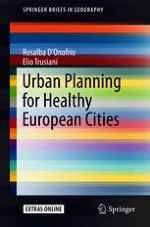2018 | OriginalPaper | Buchkapitel
2. Goals, Opportunities and Limits to the European Healthy Cities Network
verfasst von : Rosalba D’Onofrio, Elio Trusiani
Erschienen in: Urban Planning for Healthy European Cities
Aktivieren Sie unsere intelligente Suche, um passende Fachinhalte oder Patente zu finden.
Wählen Sie Textabschnitte aus um mit Künstlicher Intelligenz passenden Patente zu finden. powered by
Markieren Sie Textabschnitte, um KI-gestützt weitere passende Inhalte zu finden. powered by
